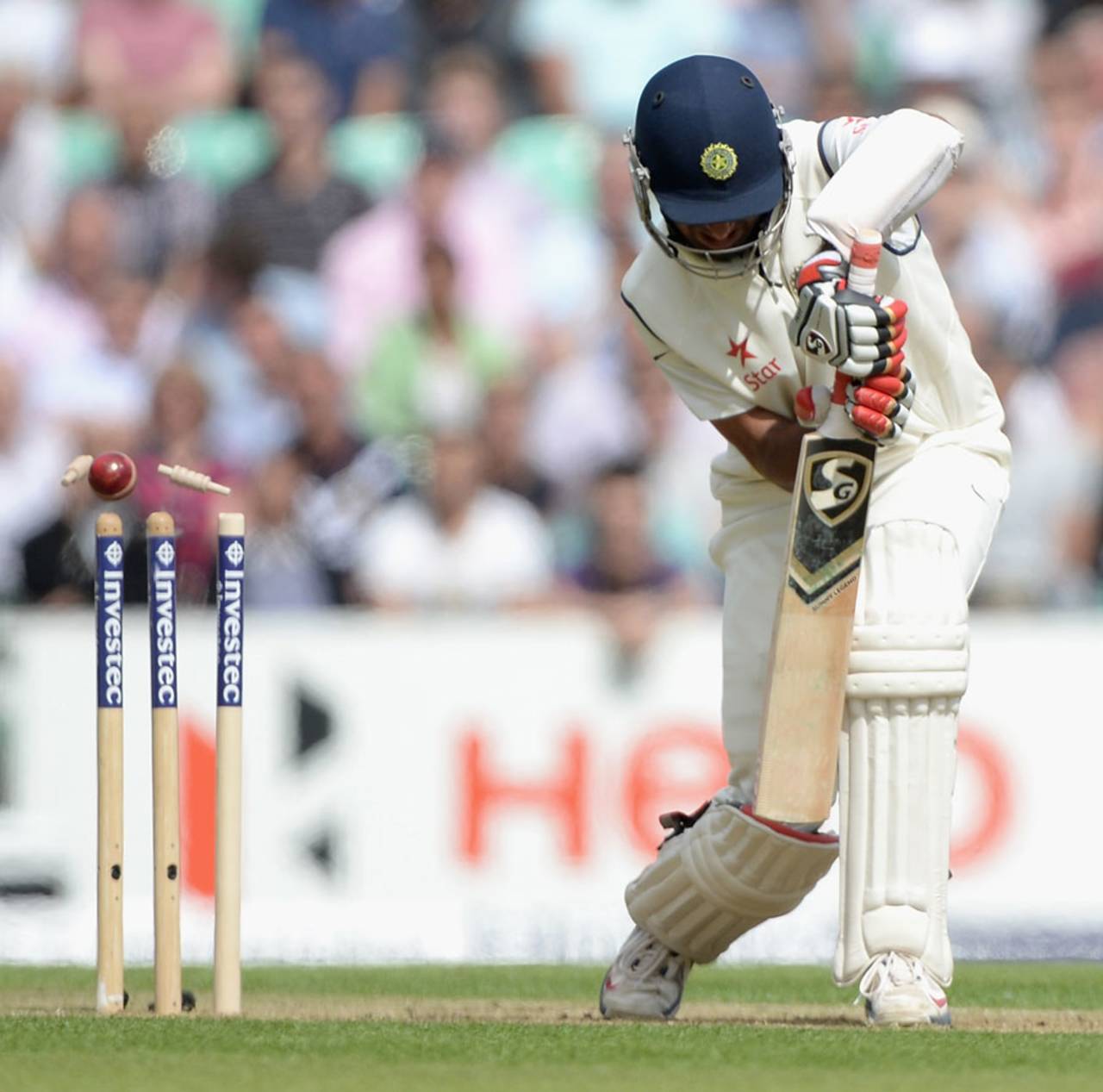Amusement and bemusement are twin emotions I usually experience when reading cricket columnists in broadsheets who often write to their audience rather than writing for them. The distinction is worth noting; writers like Michael Atherton and Gideon Haigh, for example, write to educate and inform. The vast majority of cricket columnists seize on a comment that will resonate with their readers and run with a theme that is populist but not necessarily factually or analytically accurate.
In the
Australian, a typically irreverent comment by Darren Lehmann, meant seriously but with a twinkle in his eye, as is his style, was the trigger for a piece that brought into focus the issue of "doctored" pitches. This was in relation to India's meek capitulation on a seamer-friendly deck
at The Oval, the inference being that England deliberately produced a "dustbowl" to suit Graeme Swann in the corresponding Ashes Test a year prior. On the face of it, it is an observation that tells us nothing new. Most pitches favour the home side, mainly because the home team are accustomed to playing in those conditions. Nothing sinister in that. I scoured the Indian press and found precious little evidence of any suggestion that they were cheated by a doctored pitch. It was all focused on poor batting (India) and excellent bowling/catching (England). The conspiracy theories were non-existent as far as my searches revealed.
Even if there is any truth to England preparing typical seaming pitches to suit their strengths against India, what's the big deal? It has always been thus. Visiting teams tend to struggle on pitches that home teams seemingly have no problem with. England faced 116 overs for 486 runs (ten wickets) and India lost 20 wickets for 242 runs in 91 overs. That suggests a vast gulf in ability, not a diabolical, sub-standard pitch. There were similar embarrassing scorelines in Australia last summer but most fair-minded cricket followers would mark that down to an Australian performance that was par excellence. Anything else would be to short-change a brilliantly executed Australian strategy.
Sometimes a lazy journalist will either deliberately ignore facts, or worse still, not have the cricketing nous to understand the nuances of the game. Take the Ashes Test
at The Oval last year. For all the talk of it being a dustbowl and being doctored for Swann, it produced five runs per over in the last session on day five, with Nathan Lyon going at 4.4 runs an over. Unlike the recent India Test, which finished on day three, it went the full five days. How many other pitches anywhere in the world allow the batting side to score at over five an over in the 15th session of a Test match?
Likewise, Australia's visit to India in early 2013, on pitches that Ricky Ponting recently described as "ordinary". Australia's performance on that tour may well have fit that description but the pitches were typically Indian. Most games went deep into day four or five, Australia won every toss, batted first and scored close to 250 (minimum) in the first innings every time. India replied with massive totals in most games and the lowest of Australia's second-innings scores was 131. That's a far cry from being bowled out for 152, 161, 148 and 94 (India's last four innings in England). For all the talk of it being doctored to suit England's quicks, Moeen Ali took
19 wickets at 23 apiece against arguably the best players of spin in the world.
Compare Australia's batting in India in 2013 (380, 241, 237, 131, 408, 223, 262, 164 for a total of 2046 runs at 25.8 per wicket) to India's abject performance in Australia in 2011-12 (282, 169, 191, 400, 161, 171, 272, 201 for a total of 1847 runs 23.08 per wicket). The numbers tell a story - the Indians found it harder to bat on Australian pitches than the Australians did in India. India had a star-studded batting line-up compared to Australia's youthful team, but I can't recall any visiting Indian journalists decrying doctored pitches. The only doctors spoken of were to patch up any physical or mental wounds inflicted by a superior Australian team, revelling in home conditions. So what's new about that? Has it not always been thus?
Look at England's last Ashes series scores: 136, 179, 172, 312, 251, 353, 255, 179, 155, 166 at 21.58 per wicket. Australia's visit to England in 2013 on allegedly "doctored" pitches produced scores of 280, 296, 128, 235, 527, 172, 270, 224, 492, 111 at 30.7 runs per wicket. That's nine runs per dismissal higher than England could manage in Australia. Where's the factual evidence to support this theory of doctored pitches?
Skill needs to be celebrated in its own right, not sullied by sour grapes. Mitchell Johnson's phenomenal bowling last summer was a triumph of his skill and hard work, nothing whatsoever to do with home pitches that naturally suited him. I haven't heard Pakistan complaining about being spun out by Rangana Herath on pitches that traditionally turn big. They had Saeed Ajmal but Sri Lanka countered him effectively. That's skill, not skulduggery. Most good teams win at home in conditions that favour them. Very good teams sometimes win away from home. Australia beat South Africa recently, the South Africans did likewise in Australia in 2008-09 and again in Sri Lanka a few weeks ago even in spin-friendly conditions. It's hard to put a spin on that!
